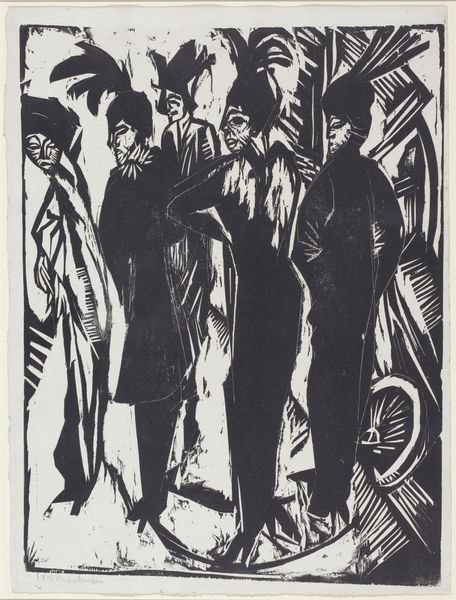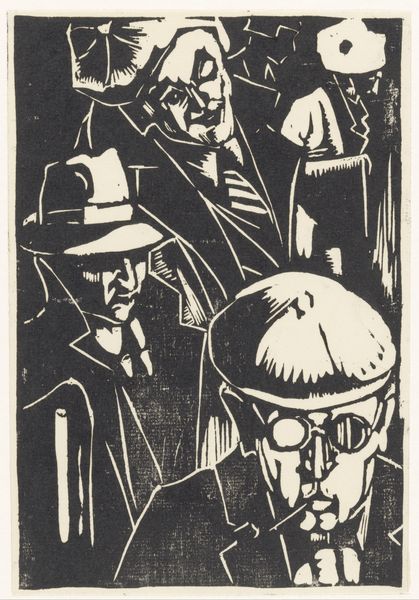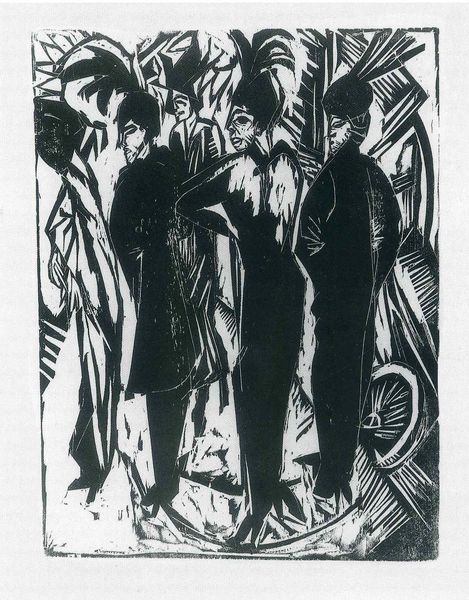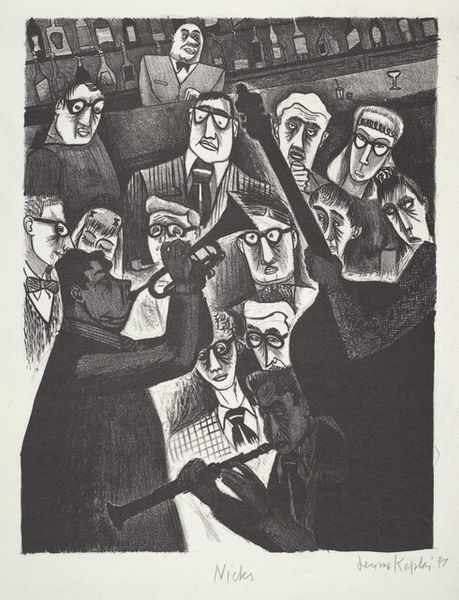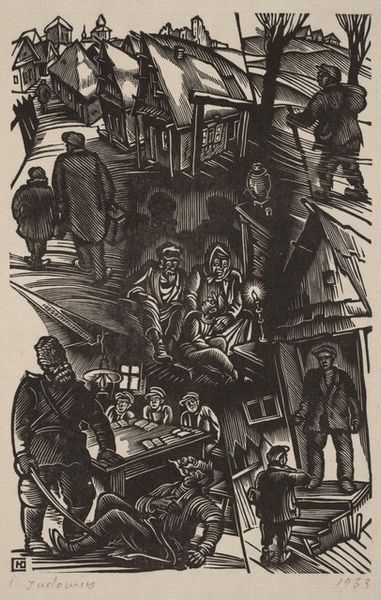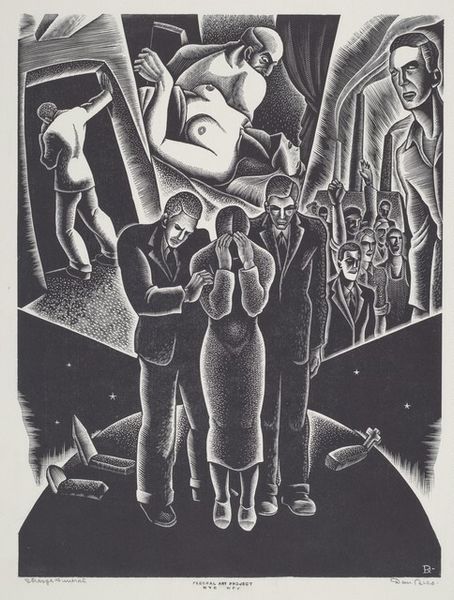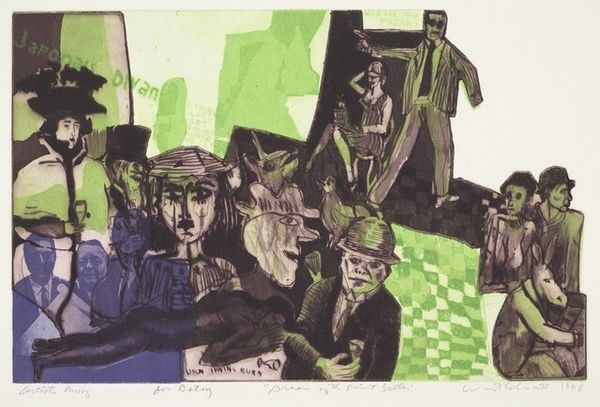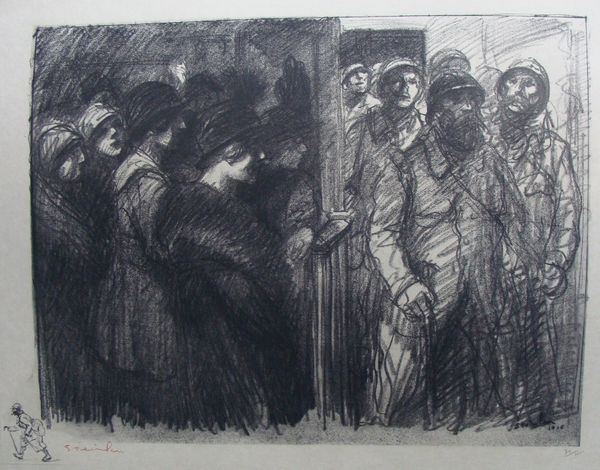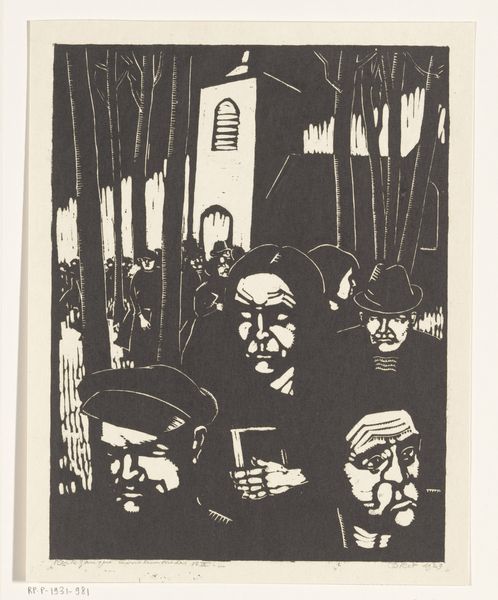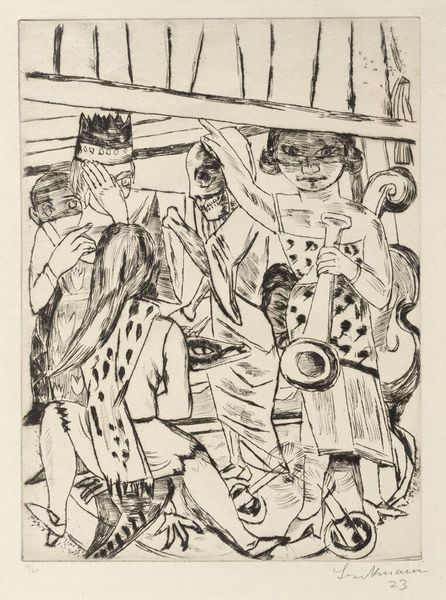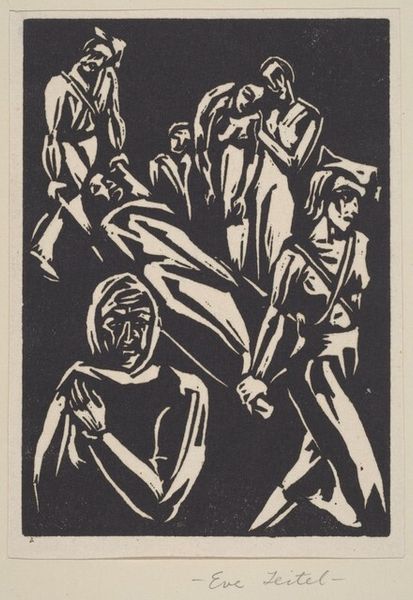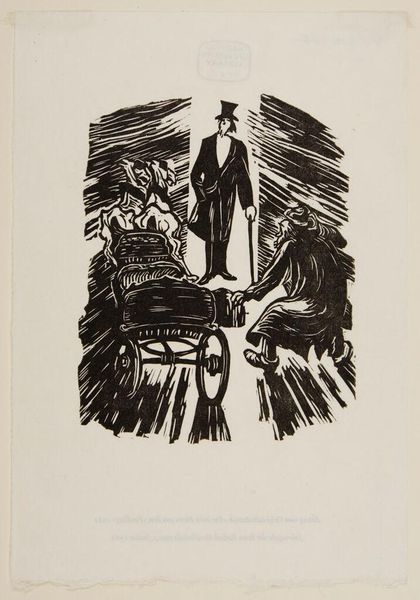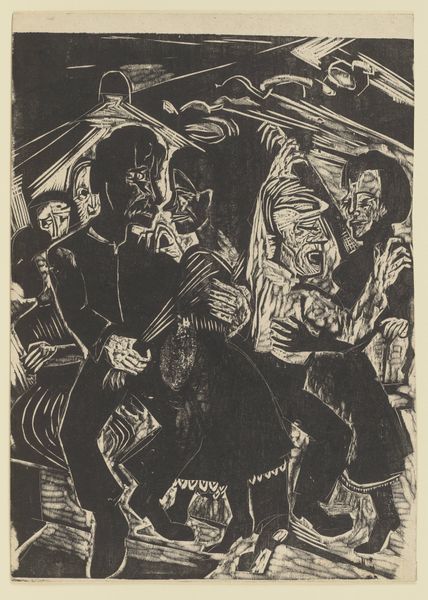
woodcut
#
portrait
#
expressionism
#
woodcut
#
cityscape
#
street
#
monochrome
Copyright: Public domain
Curator: Immediately striking, isn’t it? I feel like I’ve walked into a shadowy back alley. A slightly unsettling feeling. Editor: Indeed. We’re looking at Ernst Ludwig Kirchner's "Street Scene: In Front of the Shop Window," created in 1914. Kirchner, a leading figure in German Expressionism, captured a fragmented, unsettling image of urban life through the demanding process of a woodcut. Curator: Woodcut. You can see that intensity. The high contrast – stark black and white – feels very deliberate. Each line is like a shout. But what are they all looking at? And why so many hats? Editor: The top hats suggest the bourgeoisie, but his figures aren’t simple portraits. Kirchner's work often depicted the alienation he observed in rapidly modernizing cities like Berlin. The facelessness is intentional. He presents figures absorbed in a consumerist environment yet isolated from true human connection. Curator: Ah, the old angst of modernity. Consumerism devouring our souls! But it's the chaos that grabs me most. The perspectives are so warped, that makes them feel so dehumanized. Everything is sharp and angular, it’s deeply psychologically jarring. Editor: Absolutely, the angular forms, born from the sharp cuts into the wood, speak to a nervous energy, to the disquiet he witnessed around him. Kirchner wasn't simply representing reality. He was channeling how it *felt* to experience the accelerated pace and social disconnect of the early 20th century. Also this would be just before the start of WWI... Curator: Making that anxiety even more palpable, it sounds right! Even if unsettling, you can not help but love how he transformed anxiety to visual art. A mirror on the soul, perhaps! Editor: Yes, perhaps he gives us tools to comprehend, question, and possibly transmute our responses to change when viewing. Thank you for providing insight and context into the artists possible mindset during the art process, I always find it helpful in considering art historical points of view.
Comments
No comments
Be the first to comment and join the conversation on the ultimate creative platform.
